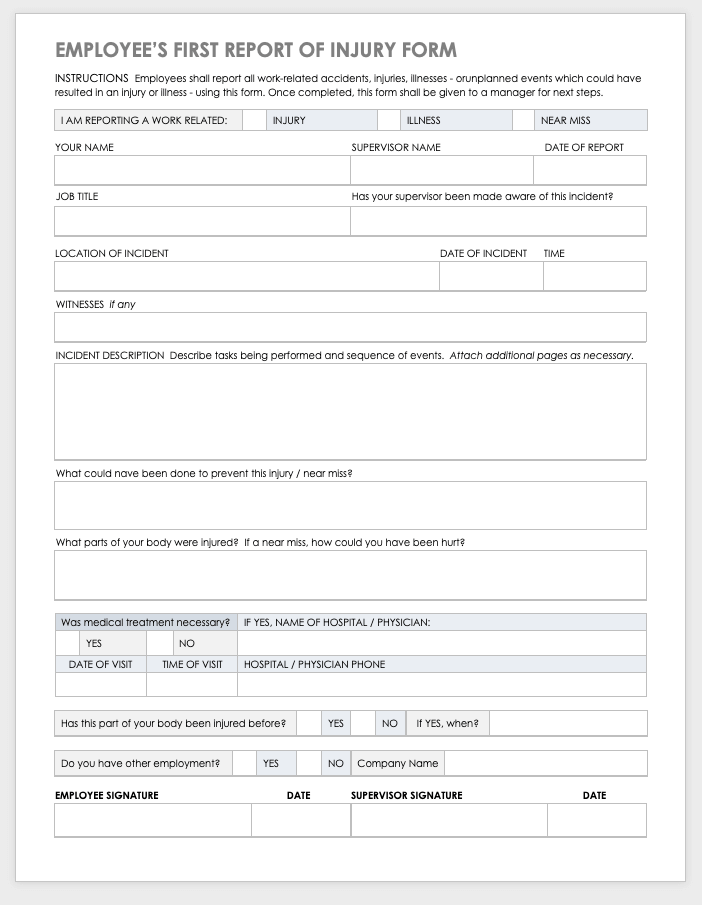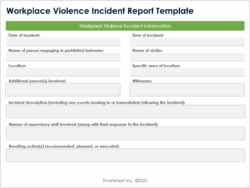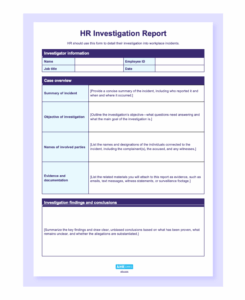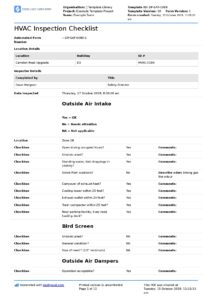Every workplace, no matter how carefully managed, faces the potential for unexpected events. From minor slips and trips to more significant incidents, maintaining a safe environment is a continuous endeavor. While prevention is always the primary goal, understanding that incidents can and sometimes do occur is the first step in building a resilient safety culture. It is during these challenging moments that a structured approach becomes incredibly valuable.
When an incident happens, the immediate priority is always the well-being of those involved. However, once initial actions are taken, the next crucial step is thorough documentation. This isn’t just about ticking boxes for compliance; it’s about learning, improving, and preventing similar occurrences in the future. Accurate and timely reporting provides the insights needed to identify weaknesses and strengthen safety protocols.
To ensure consistency and effectiveness in this critical process, having a standardized tool is essential. That’s where a comprehensive workplace health and safety incident report template comes into play. It provides a clear framework, guiding you through the necessary steps to gather all pertinent information, ensuring nothing is overlooked and that your organization can respond, learn, and evolve from every event.
Why a Robust Incident Report is Your Best Friend in Workplace Safety
An incident report isn’t merely a piece of paperwork filed away; it’s a vital tool that underpins your entire safety management system. Its primary purpose extends far beyond simply documenting an event. It acts as a detailed investigative log, helping you pinpoint the exact circumstances leading up to an incident, the immediate aftermath, and the steps taken to address it. Without this precise record, understanding trends, identifying recurring hazards, and implementing effective preventative measures becomes a much more challenging, if not impossible, task.
Think of it as a blueprint for improvement. Each report contributes to a larger data set that, when analyzed, reveals patterns and systemic issues that might otherwise go unnoticed. Was there a procedural failure? Was equipment malfunctioning? Was a training gap apparent? These are the questions a well-crafted report helps answer, moving your organization from reactive problem-solving to proactive hazard mitigation. It’s about creating a culture where every incident, no matter how small, becomes a valuable learning opportunity.
Beyond internal learning, a meticulously completed report offers crucial legal protection and aids in regulatory compliance. In the unfortunate event of an investigation or a claim, detailed records demonstrating a commitment to safety and a diligent response to incidents can be invaluable. It proves that your organization takes its responsibilities seriously and has a structured process for managing health and safety risks. This level of documentation is often a mandatory requirement by various regulatory bodies, making a standardized approach non-negotiable.
This is precisely why a well-designed workplace health and safety incident report template is so indispensable. It standardizes the data collection process, ensuring that all relevant information is captured consistently, regardless of who is completing the report. This standardization minimizes errors, reduces the likelihood of missing critical details, and streamlines the entire reporting procedure. It transforms what could be a chaotic information-gathering exercise into an orderly and efficient process.
Ultimately, robust incident reporting is about continuous improvement. It’s about transforming negative events into positive changes. By thoroughly investigating and learning from every incident, you build a safer, healthier work environment for everyone. It demonstrates a commitment to your employees’ well-being and strengthens your overall organizational resilience against potential hazards.
Key Sections to Include in Your Template
- Incident Details: Date, time, location, type of incident.
- Affected Parties: Names, roles, contact information, extent of injuries/damages.
- Witness Statements: Names of witnesses, their accounts of the event.
- Immediate Actions Taken: First aid, emergency services contact, equipment shutdown.
- Root Cause Analysis: Why did it happen? Contributing factors, underlying issues.
- Recommended Corrective Actions: Specific steps to prevent recurrence.
- Investigation Team/Reviewer Details: Names, dates of review, sign-offs.
Implementing and Utilizing Your Incident Report Template Effectively
Having a superb workplace health and safety incident report template is only half the battle; knowing how to implement and utilize it effectively is just as crucial. The first step involves ensuring that all employees, especially supervisors and team leaders, are thoroughly trained on its use. This training should cover not only how to fill out each section accurately but also the importance of timely reporting and the overall contribution of incident data to the company’s safety culture. Clear guidelines on what constitutes a reportable incident and the immediate steps to take following an event are also vital parts of this training.
Accessibility is another key factor in effective utilization. The template should be readily available to anyone who might need to complete it, whether it’s in a digital format on a shared drive, an intranet portal, or easily accessible physical copies in designated areas. The process for submitting a completed report must also be clear and straightforward, ensuring that there are no barriers to employees fulfilling their reporting duties. A cumbersome or confusing process can lead to delays or, worse, incidents going unreported.
Finally, the information gathered through these reports must be consistently reviewed and analyzed. It’s not enough to simply collect data; that data needs to be acted upon. Regular reviews by a dedicated safety committee or management team can identify recurring issues, track the effectiveness of corrective actions, and inform updates to safety policies and procedures. This analytical phase closes the loop, transforming individual reports into actionable insights that drive continuous improvement in workplace safety.
Adopting a structured approach to incident reporting, supported by a well-designed template, is a cornerstone of effective workplace safety management. It transforms potential setbacks into powerful learning opportunities, fostering an environment where safety is always a top priority and continuous improvement is embedded into the organizational culture.
By consistently utilizing and analyzing the information gathered through a standardized reporting process, organizations can not only fulfill their regulatory obligations but also proactively enhance the well-being of their workforce. This commitment to thorough incident documentation lays the groundwork for a safer, more productive, and ultimately more resilient workplace for everyone.




